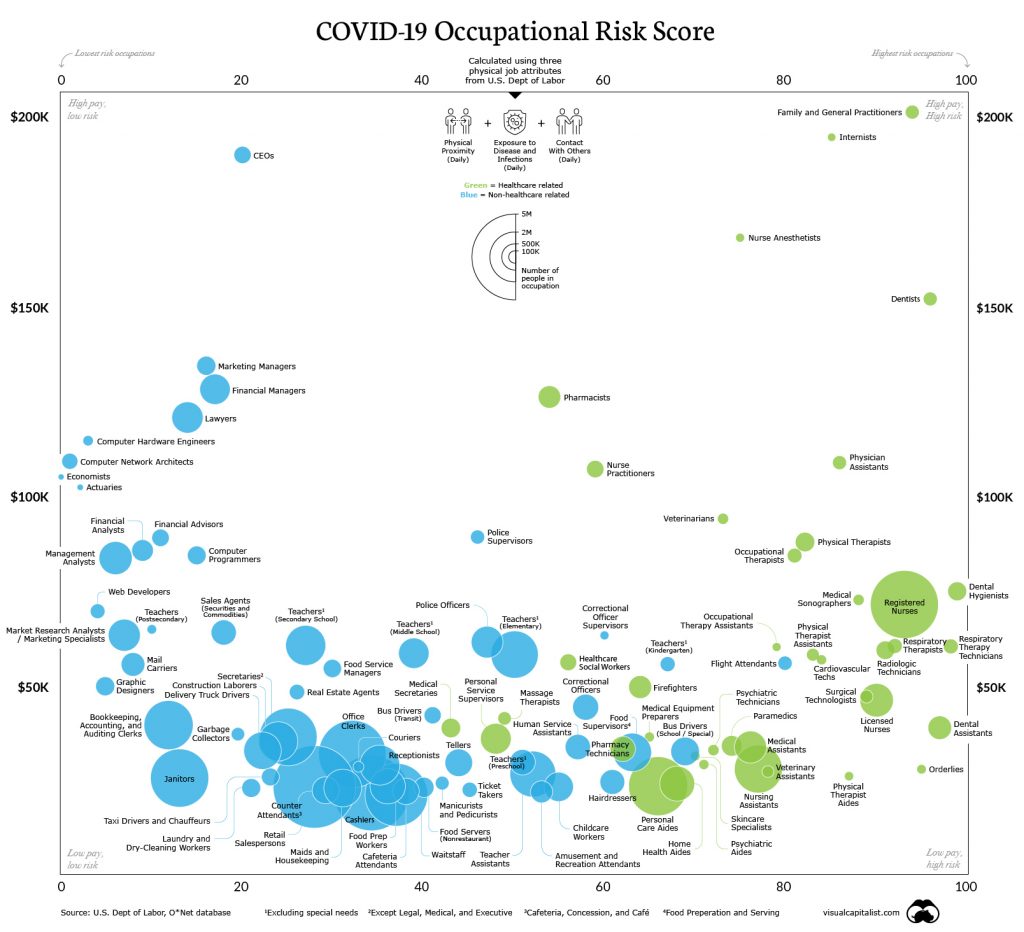The best way to remove aerosols created by dental procedures is to create a stream of air focused close to the source. Source capture as it’s known is more efficient since we’re pulling a concentrated source of contaminants. Each unit of air that you are paying for “works harder” in this manner.
From this point, there are 2 choices: exhaust the air, or recirculate it. Here’s a list of pros/cons for each system.
| PRO | CON | |
|---|---|---|
| Exhaust | No worries about viral and other contaminants being spread inside | |
| Exhausts conditioned air | ||
| Requires Installation |
||
| Very Quiet | ||
| Can be designed with lots of airflow to provide a purge between patients | ||
| Recirculation | Requires expensive HEPA filters | |
| More expensive | ||
| No Installation Required |
The system shown below exhausts to the outdoors.
Let’s go through the parts starting from the intake (left to right):
- Intake cone: A plastic cone to pull aerosol from around the patient’s mouth
- Self supporting flex duct: Typically a 4″ diameter flexible duct that “self supports” – holds its last position
- Thimble: This is just a neat way to allow the inside duct to be removed and cleaned without system disassembly
- Flexible insulated duct: This duct has a plastic liner and can be easily installed
- Filter box: The CFB-6-OS contains a prefilter and a MERV15 filter. Even though we’re exhausting outdoors, it’s good practice to remove most of the particulates. The MERV15 filter is in the range of a N95 face mask.
- Inline fan: We really like this powerful fan that is capable of high static pressure (sucking ability) and high flow (CFM or cubic feet per minute). The fan can be adjusted for flow for two modes: a) Patient aerosol removal b) Room purge between patients [VERY USEFUL AND PROBABLY WILL BE CODE MANDATED]
References
- https://www.osha.gov/SLTC/indoorairquality/
- https://www.cdc.gov/mrsa/healthcare/index.html
- https://www.cdc.gov/sars/
- https://www.apcfilters.com/importance-air-quality-dental-offices/
More Information
- Filter Boxes
- Inline fans with EC motors
- Roof Caps
- Wall Hoods
- Ductwork
- Backdraft Damper
- Email us at: team@hvacquick.com
- Need to build a system ? Call our customer service/tech team: 877.711.4822


